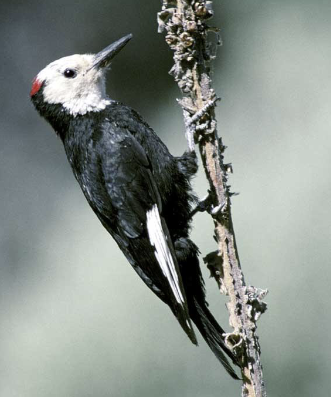Exam 1 - Mountain & Desert Biology
1/201
There's no tags or description
Looks like no tags are added yet.
Name | Mastery | Learn | Test | Matching | Spaced |
|---|
No study sessions yet.
202 Terms
Mountain Zones
Snow Zone
Alpine zone
Subalpine zone
Montane zone
Foothill zone
On mountain slopes, vegetation type changes with elevation because:
temperature decreases
precipitation increases
wind speed increases
soils are less developed
shorter growing season
Chaparral zone
Mediterranean climate
winter: rainy season, cool
summer: hot, dry
native shrubs adapted to droughts & frequent fires
abundant birds/mammals/reptiles/amphibians
Foothill zone
winter: no snow
summer: hot & dry
native plants adapted to droughts and frequent fires
native grasses overgrown & replaced by non-native invasive grasses
abundant birds/mammals/reptiles/amphibians
Montane zone
winter: cold, snow
summer: warm/cool
moderate snow/rain
mature coniferous forests
abundant birds/mammals/amphibians
few reptiles
Subalpine zone
winter: cold, long, very deep snow
summer: cool, brief
evergreen (conifer) trees are short
poor rocky soil
various small birds, mice, squirrels, hare, weasels & occasional lynx, coyote, fox
Alpine zone
winter: long, cold, snowy
summer: short, cool, sunny
no trees
poor soil, high wind, short summer
krummholtz - stunted trees, shrub-like
dwarf plants grow next to warmer soil surface
marmots, pikas, ptarmigan
Stellar’s Jay
known for food caching behaviors
remember where hidden throughout year but especially winter
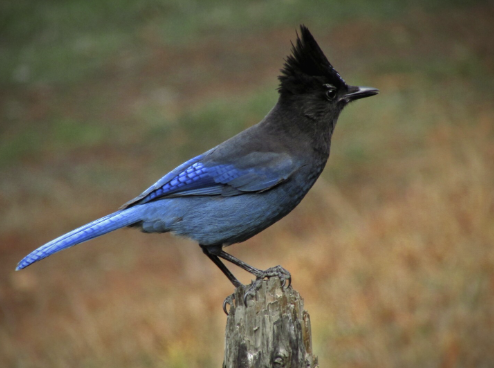
Clark’s Nutcracker
related to jays
carry seeds in throat pouch
collect and cache pine seeds for winter
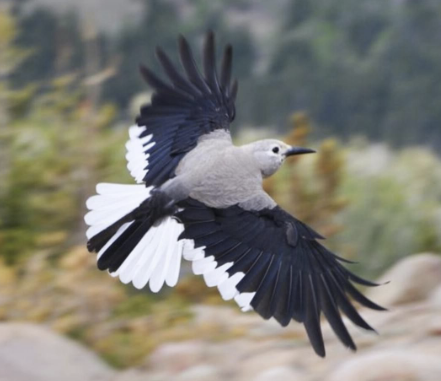
Northern Goshawk
short, broad wings & rudder-like tail giving agility to navigate through vegetation of conifer forest
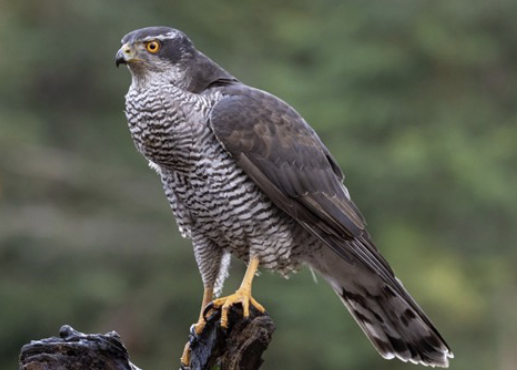
Red Crossbill
unusual bill shape to get into tightly closed conifers
feeds conifer seeds to young
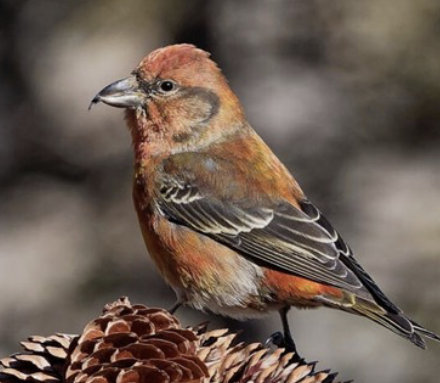
Piliated Woodpecker
largest woodpeckers found in montane forest
provide holes for many other species
eat carpenter ants in dead/dying trees
don’t kill trees
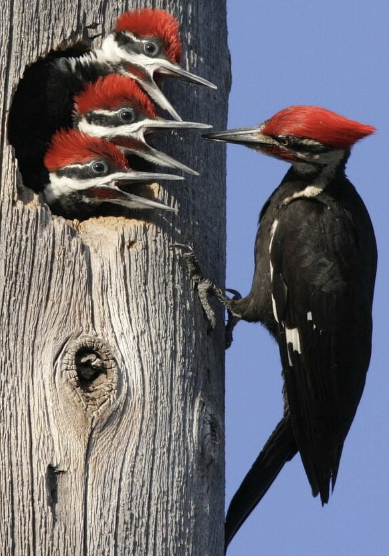
Red-breasted Nuthatch
cling to trees, moving up, down and around trunk and branches gleaning insects out of bark and cones
male and female forage together, chatting
nest in conifer tree cavities
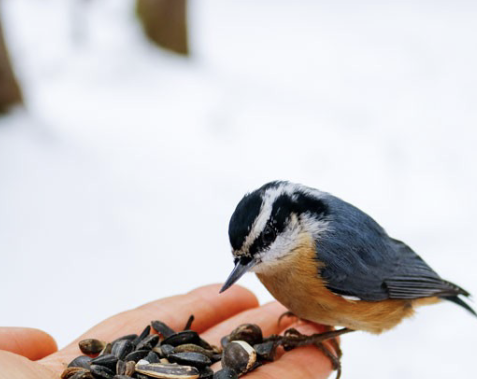
Sooty Grouse
inhabit forest floor up to treeline
ear conifer needles and buds in winter, berries and insects in summer
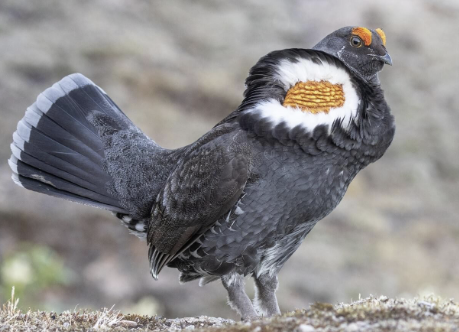
American Dipper
North America’s only aquatic songbird
dives underwater to forage for aquatic larvae
build mossy, domed nests under small waterfalls
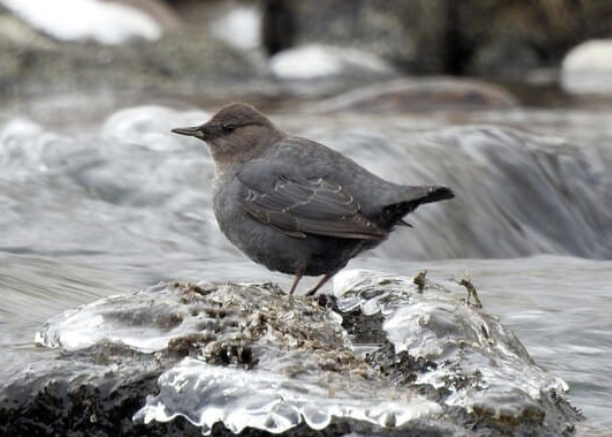
Forest Fragmentation
Process during which a large expanse of habitat is transformed into a number of smaller patches, causing population fragmentation and isolation and ecosystem decay
interior habitat and species decrease
exterior habitat and species increase
Important symbiotic relationship between trees & fungi
mycorrhizal associations
symbiosis between plant roots and beneficial fungi
plants gain increased water & mineral nutrients due to fungal mycelium
fungus obtain energy (photosynthetic carbon/carbohydrates) from plants
Fisher
second largest member of weasel family in N.A
diet: variety of foods; fruit to rodents to birds
one of few predators of porcupine
nocturnal
active year-round
increasing fires destroying their habitat → dispersal forced
predators: bobcats & mountain lions
management strategies:
retain diversity of dead/dying woody material including old trees with holes - make dens
minimize fragmentation
release and maintain wild apple trees - fishers like apples
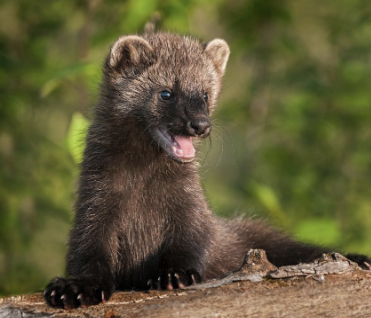
Golden-mantled Ground Squirrel
coniferous montane foest
diurnal
diet: fungi, berries, grasses, bulbs, insects
eat & disperse fungi involved in mycorrhizal associations
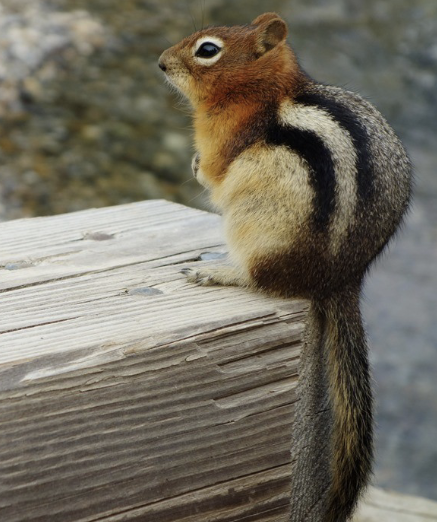
State the three observations that led to your research questions, hypotheses, and predictions?
#1. Temperatures are increasing due to global
warming.#2. Smaller birds experience greater
evaporative water loss than larger birds.#3. Numbers of birds were 3 times higher near
water in an arid environment.
Pyrophytic species
plants adapted to fire and some depend on it for their reproduction
Resprouters
shrubs that have stems that regenerate following fire from below ground burls
i.e. Toyon
Obligate seeders
shrubs that produce large amounts of dormant seeds that persist for long periods of time and germinate by heat or chemical processes started by fire
i.e. cypress, ceanothus
“Both” plants
plants that apply resprouter and obligate seeder strategies
i.e. chamise
Lower chaparral
warm chaparral, in the lower slopes of the mountains
Lower chaparral plant characteristics
sclerophyllous
pubescent
woody stems & large root systems
evergreen shrubs grow in Winter & Spring (rainy szn)
energy goes into chemicals in leaves to discourage herbivory
root growth occurs in Summer & Fall (dry szn)
Define sclerophyllous
stiff, hard, evergreen leaves with waxy coatings to resist drying out; highly fibrous often with serrated or spiny margins
Define pubescent
hairy, fuzzy leaves that deter insects and herbivores; prevents water loss
Chamise characteristics
dominant shrub of lower chaparral
tiny, resin-coated, drought adapted leaves
large root system
resprouter & obligate seeder
resprouts from root crown after fire & needs heat to germinate seeds
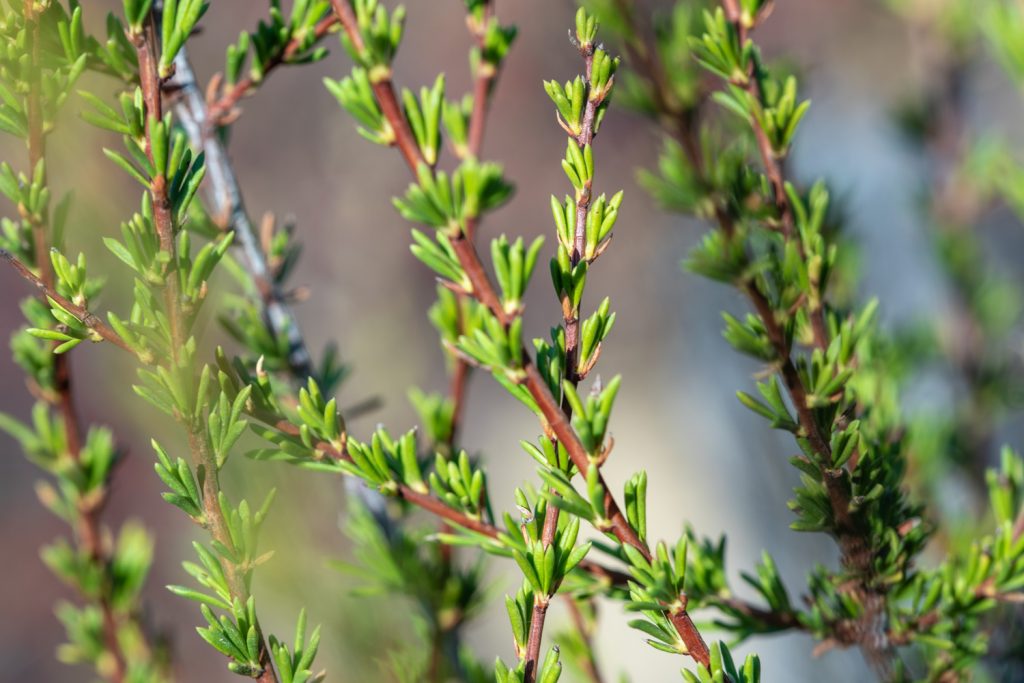
Ceanothus “buckbrush” characteristics
another dominant chaparral plant
obligate seeder
allelopathic leaves
nitrogen fixing bacteria in roots
shoots & leaves high in protein
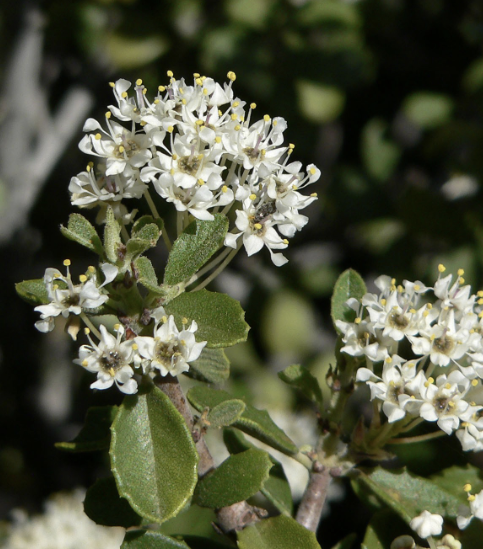
Cercocarpus betuloides “mountain mahogany” characteristics
cercocarpus (cricle/around — seed)
curly stem on seed helps drive seed into ground with changes in humidity
evergreen shrub
reddish wood used to make indigenous peoples tools
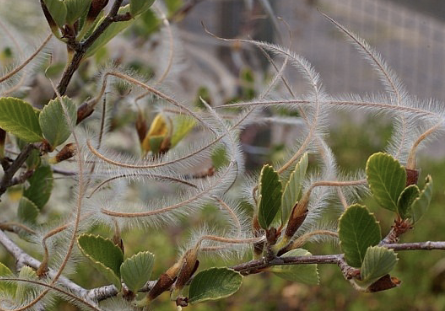
Quercus berberidifolia “scrub oak” characteristic
dominant chaparral plant on N-facing slope
leathery leaves with hair on underside, spiny margins
provides habitat for nesting woodrats & birds
oak acorns important food to chaparral animals
i.e. woodrats, coyotes, mice, acorn woodpeckers, scrub jay
Chaparral soils…
range from deep, weakly developed soils to shallow rocky soils
dry with little nutrients
thin, porous, rocky & relatively low in N, K, P
California scrub jay
very vocal — raspy calls
rich blue
stout bill, long tail
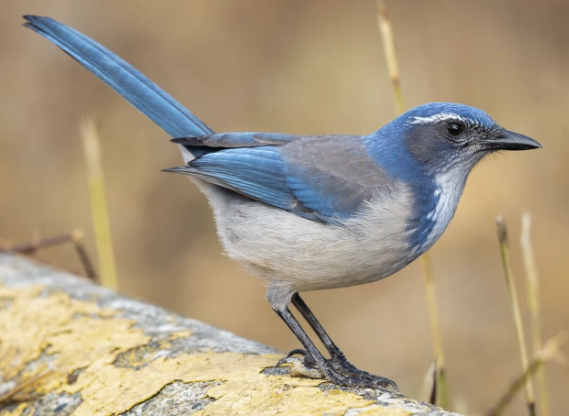
California thrasher
medium size
elat songs
long tail, curved beal
heard, rarely seen
deep shrubs or on ground
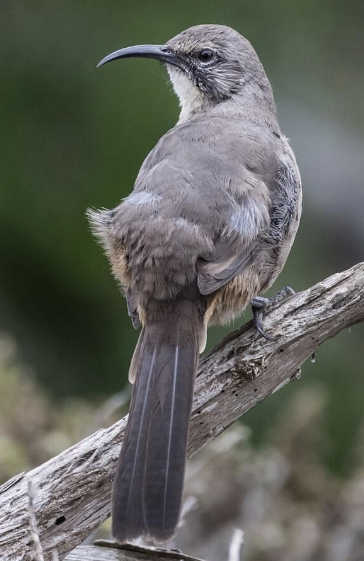
Wrentit
voice of the chaparral
bouncing ball song
small
hear not see
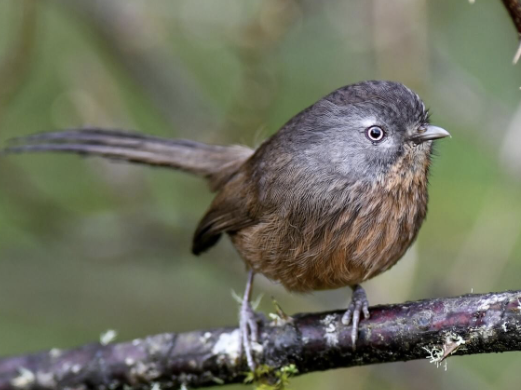
California towhee
feeds on ground
not very shy
appears all brown but has “orange underpants”
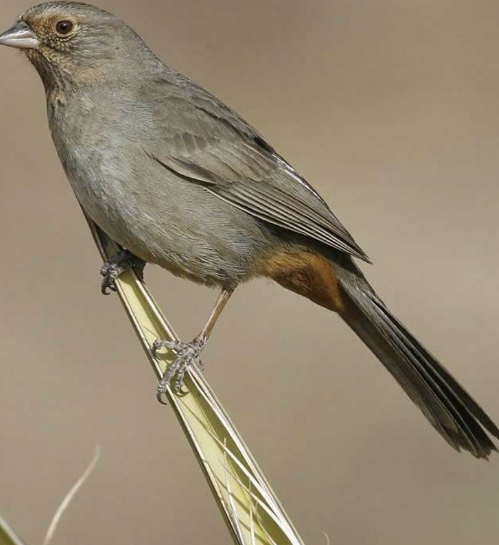
Spotted towhee
dark back, rusty sides, white spots on wings
long tail
raspy call — cat meowing
often scratching in leaves on ground
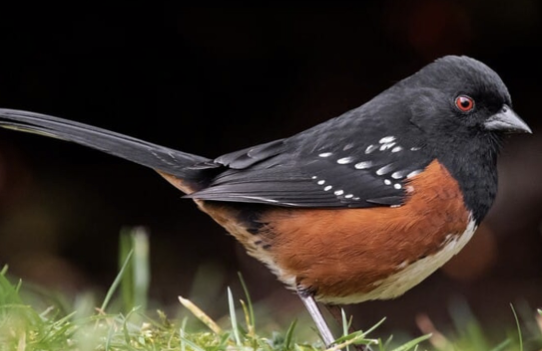
California quail
state bird
often in groups on the ground in shrubs
“chicago” call
comma crest
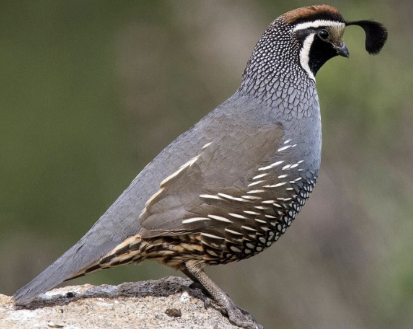
Acorn woodpecker
red cap
yellow-white face markings
black back
white wing patches
store acorns in trees
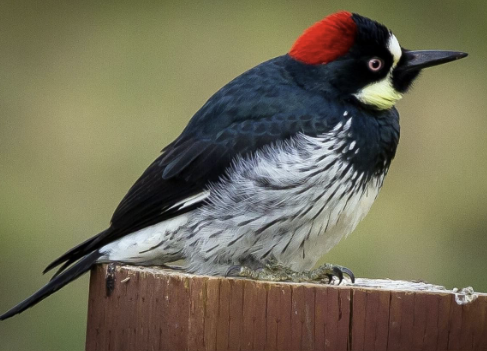
American crow
highly intelligent
often live with family members
sometimes roost in huge flocks
omnivorous
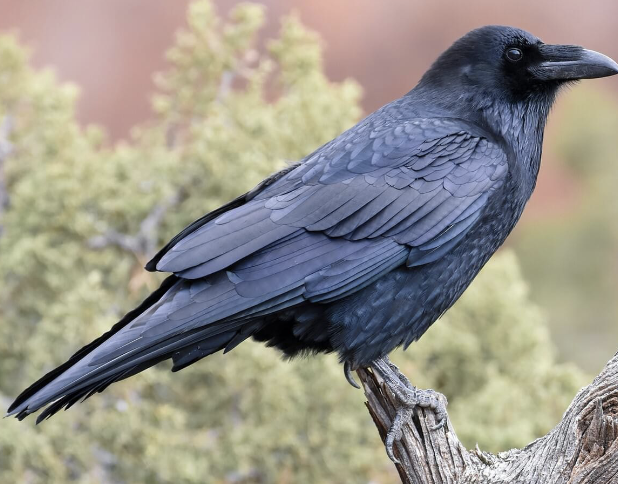
Turkey vulture
excellent sense of smell
ID by flight:
never flap wings
wings in a raised V
tilt slightly from side to side as they glide
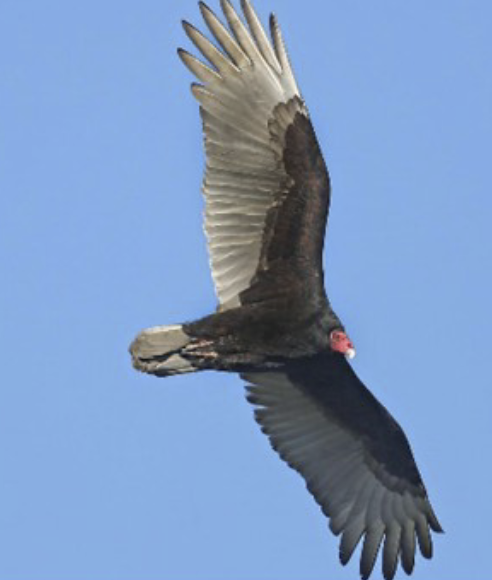
Allen’s Hummingbird
compact, stocky
bill is straight & long as its head
tail extends past wings when perched
coppery sides on belly
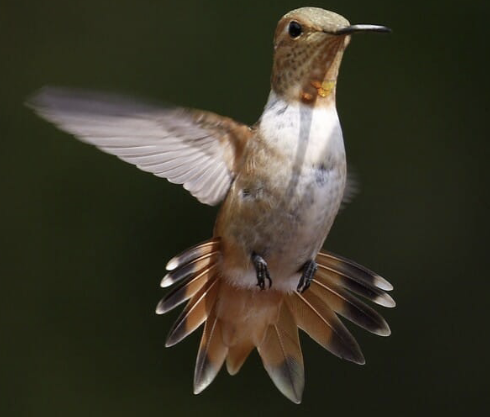
Anna’s Hummingbird
straight, shortish bill
fairly broad tail
tail extends beyond the wingtips when perched
reddish , pink throat
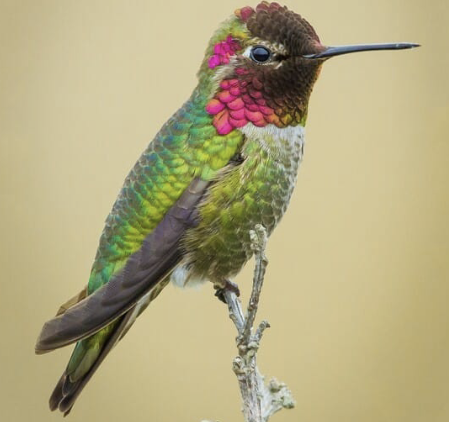
Red-tailed hawk
reddish tail
soar high overhead
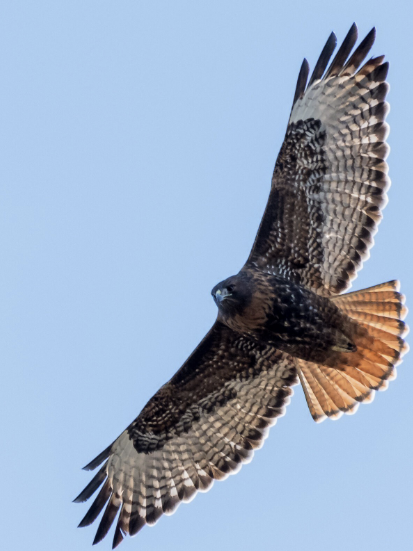
California Ground Squirrel
omnivorous
carry seeds in cheek pouches
needs very little water
builds cup-shaped nests of dried vegetation in extensive burrow system
torpid in burrows during food scarcity & hot temps
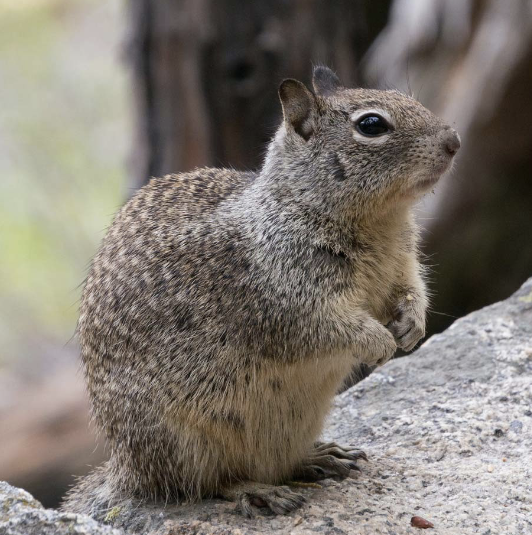
Eastern Fox Squirrel
reddish-brown fur
tree dwelling
introduced from eastern states for hunting
nuts, acorns, insects
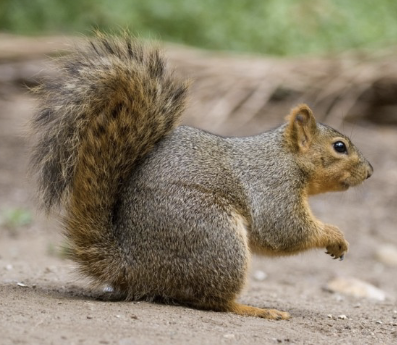
Western Gray Squirrel
gray fur, very large fluffy tail
live in trees but often forage on ground
fungi, nuts, acorns, insects & CA Bay Laurel
native tree squirrel
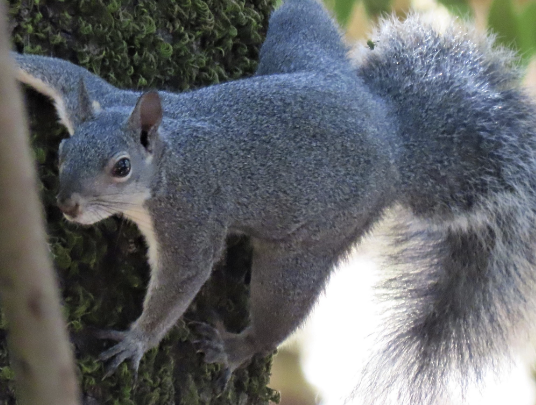
North American deer mouse & California deer mouse
nocturnal
body temp drops during daytime while in the burrow — conserves energy
omnivorous
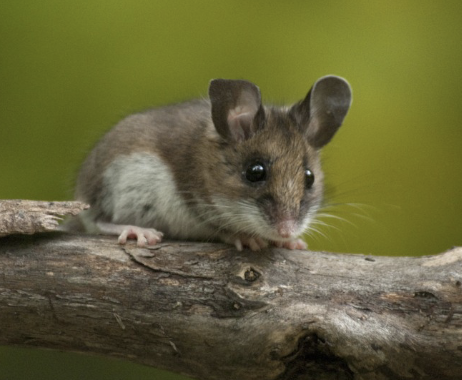
Big-eared Woodrat
nocturnal
large ears, large eyes, furry tails
acorns important in diet
use prickly pear cactus for water during drought
keystone species
build stick houses that last generations
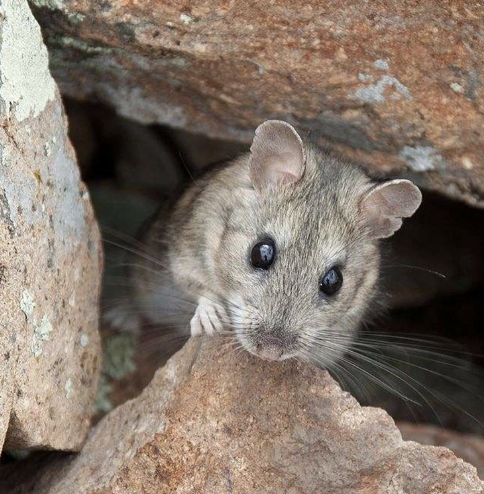
Kangaroo rats
nocturnal
forage for seeds which they store in burrow system
don’t drink water
endangered in CA due to habitat loss
comm. thru foot drumming
keystone species
excavate extensive burrows w/ mult. exits & entrances
burrowing aerates soil boosting plant growth
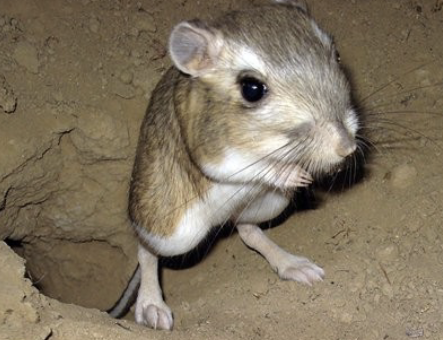
Desert Cottontail
cathemeral (active @ all hours)
herbivore
use abandoned burrows
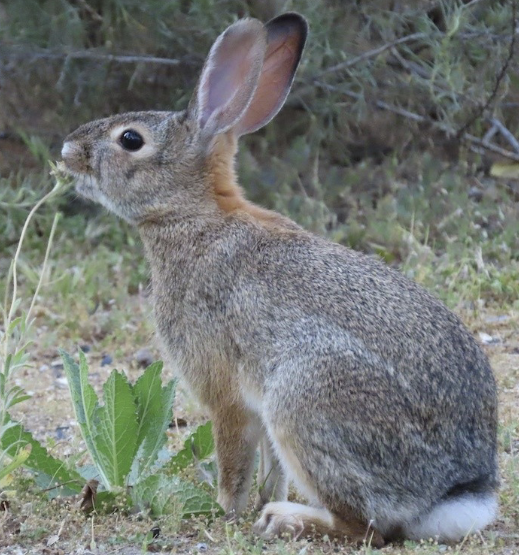
Coyote
omnivore
forage @ various times of day — crepuscular to nocturnal
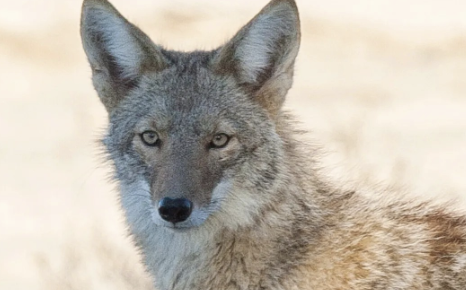
Bobcat
carnivore
short tail with black tip
hunt @ various times of day, crepuscular to nocturnal occasionally in the daytime
solitary
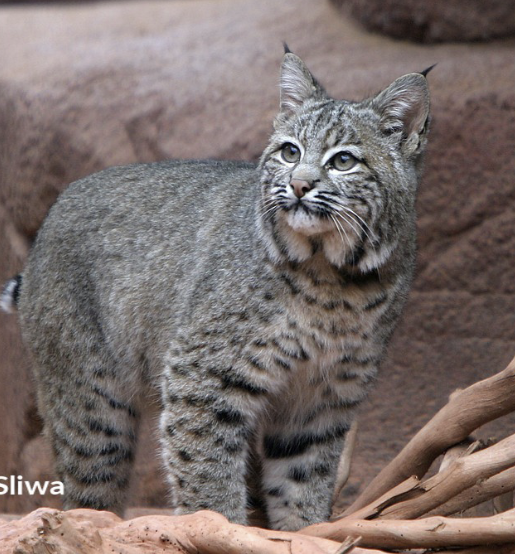
California Mule Deer
large, mule-like ears & black tipped tail
herbivores/browsers
crepuscular
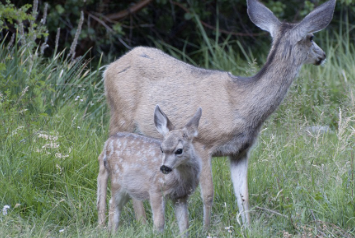
California Black Bear
omnivore (more herbivore than carnivore)
hibernate in winter: reduced metabolism saves energy
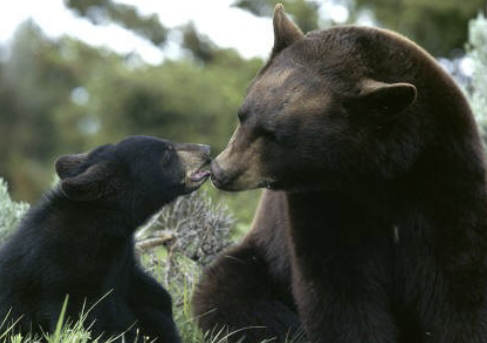
Cougar
nocturnal
specialize on deer
habitat loss heavily impacts
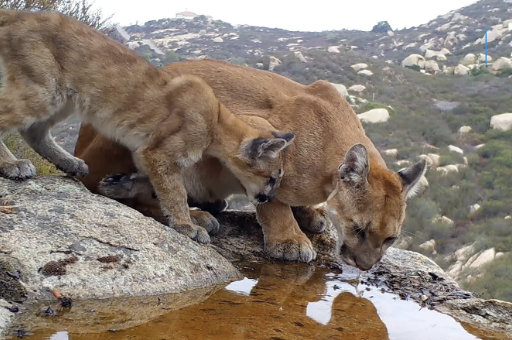
Grizzly Bear
state mammal, but extinct in CA due to hunting
once roamed foothills, omnivore
persecuted by humans
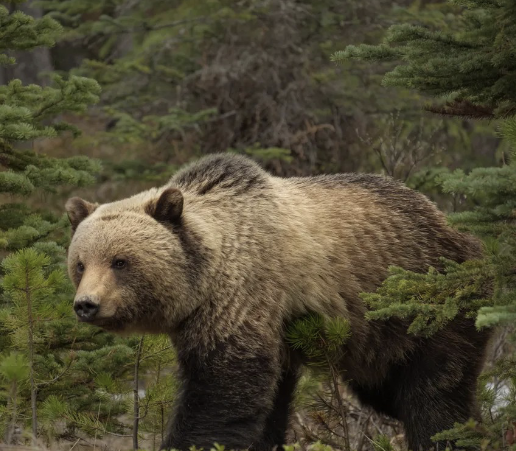
What are conifers?
perennial, cone-bearing seed woody plants
gymnosperms
most are evergreens — green, functional foliage year round
many have distinctly scented resin to protect from insect infestation & fungal ingection
Male conifer cones
small yellow cones produce yellowish pollen which is carried by the wind to female cones
Female confier cones
larger, woody and contain the seeds
seeds are distributed by wind, small mammals & birds
Confiers are adapted for…
high elevation snow
spire-like shape advantages for shedding snow
wood is flexible so branches can bend and not break
needles are green year-round & have waxy cuticle

Coast Redwood
earth’s tallest tree
tiny cones only 1 in long
small flat needles
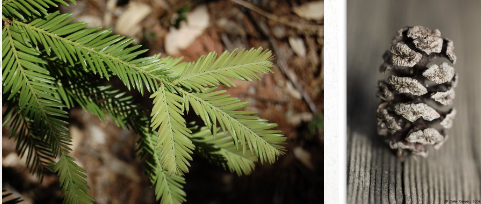
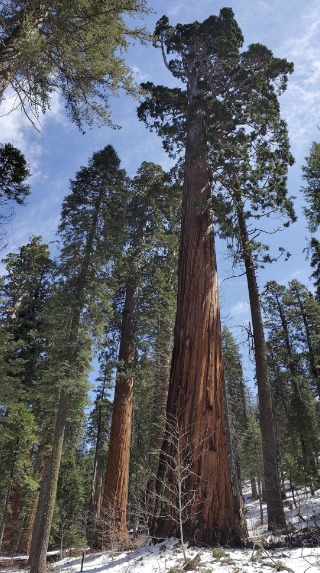
Giant Sequoia
most massive tree — but small cones
endangered
needles are scale-like with short- thick sharp points
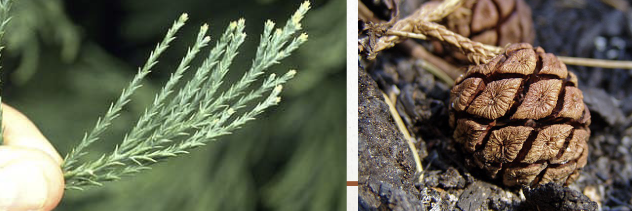
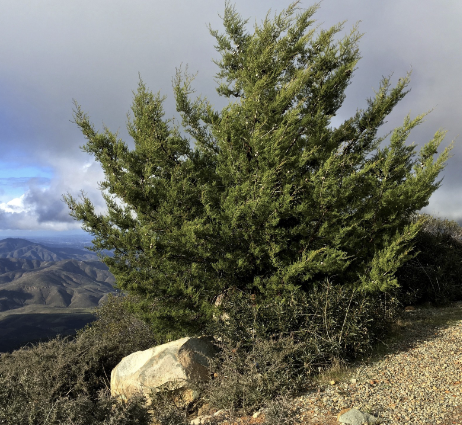
Tecate Cypress
endemic to SoCal & Baja
small tree with multiple trunks
serotinous cones (need heat/fire to open)
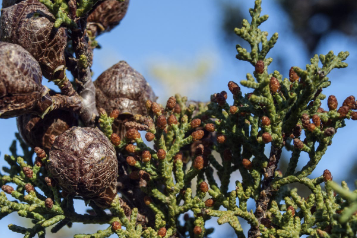
Piute Cypress
gray-green leaves
cones often remain closed for years
serotinous cones open after parent tree killed in wildfire
pyrophyte = heavily reliant on wf for regeneration
endangered
fire suppression policies limit reproduction
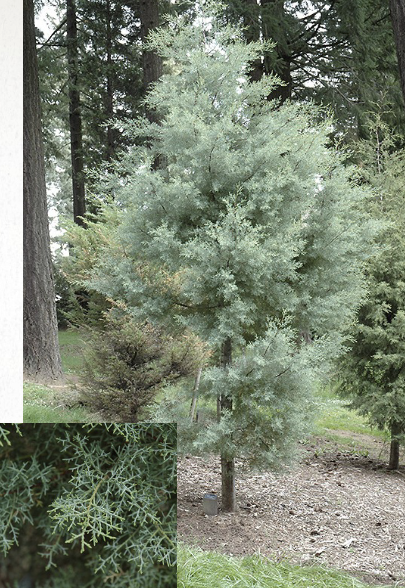
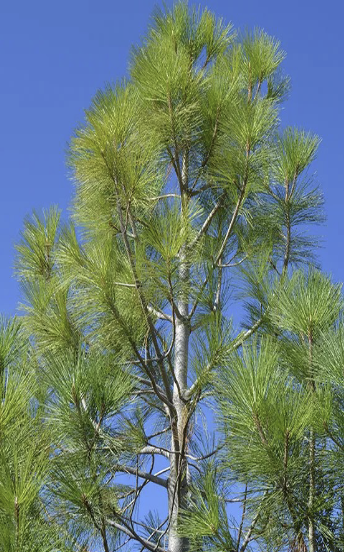
Jeffrey Pine
needles in bundles of 3
cones large with spines that point inward
“gentle jeffrey”
vanilla or butterscotch scented bark
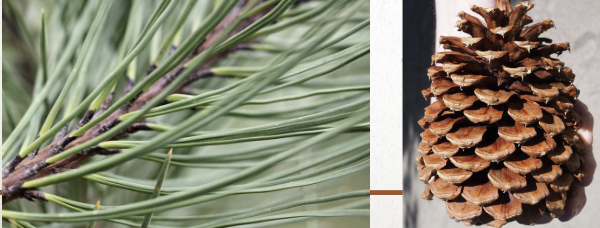
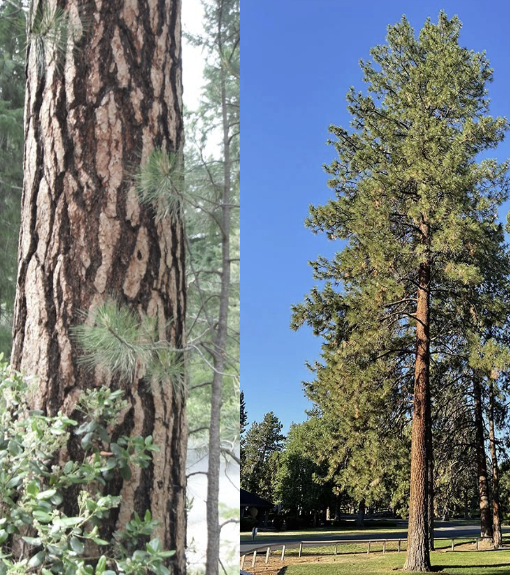
Ponderosa Pine
thick, fire-resistant bark
needles in clusters of 3
3-6 in cones with spines
“prickly ponderosa”
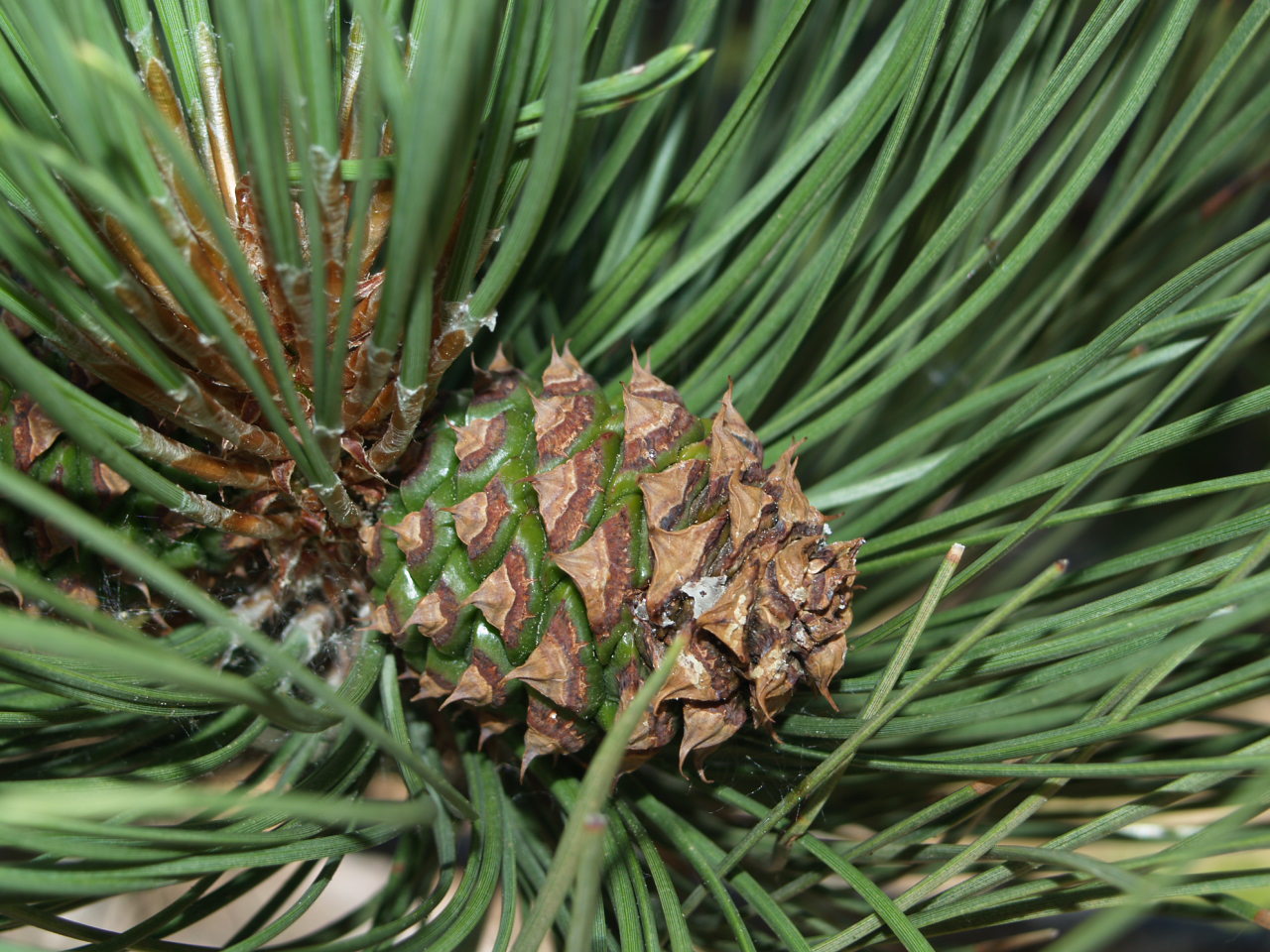
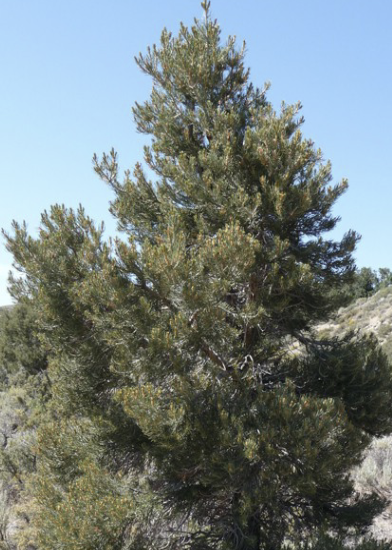
Single-leaf Pinyon Pine
edible seeds/nuts
influence soil in which they grow by increasing concentrations of macro/micro nutrients
single needle bunch
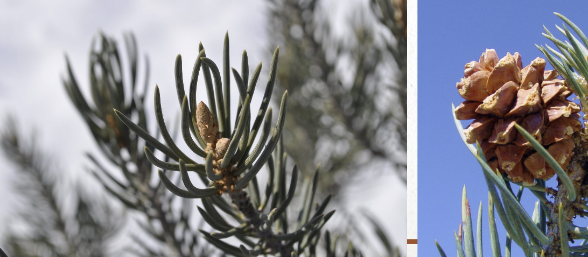
California Incense Cedar
scale-like leaves grow in flat sprays
tolerate dry conditions
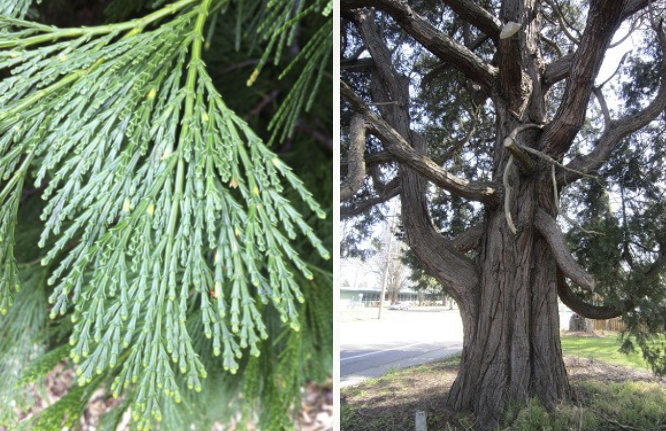
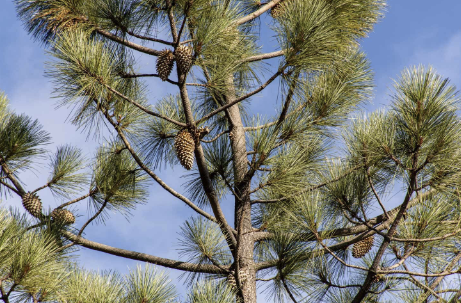
Coulter Pine
very long 12” needles in bundles of 3
heavy cones
“widow maker”
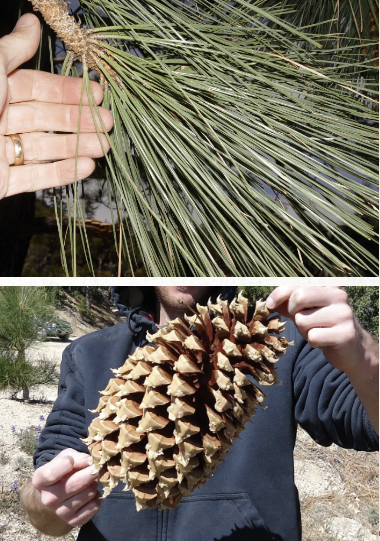
Douglas Fir
not a true fir
needles 1 in long, soft
cones with bracts (mice butts)
northern species
moist areas
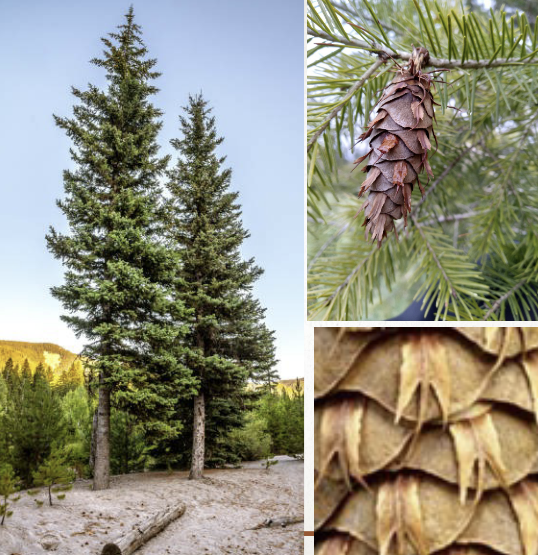
Northern Flying Squirrels are…
strictly nocturnal
Why are northern flying squirrels important in mature forests?
They are indicator species that the mature forests are healthy as well as being keystone species.
Why are flying squirrels difficult to spot in nature?
They are extremely cryptic and only glide during the night to evade predators.
What are indicator species?
An organism whose presence, absence, or abundance reflects a specific environmental condition or habitat type.
What is a keystone species?
A species on which other species in an ecosystem largely depend, such that id it were removed the ecosystem would change drastically.
Why are flying squirrels a keystone species?
They gather and move lichen, fungi, and mushrooms, they help spread mycorrhizal spores which are essential for conifer root growth throughout forest ecosystems.
Why can’t flying squirrels be studied in lab settings?
Capture myopathy, they get sick and die if captured due to extreme stress.
Impacts of ALAN on flying squirrels
artificial light in urban forest enhances suppression of flying squirrel activity in bright moonlight
appear to be shifting activity to periods of low moonlight
may be active in rural forest on bright nights because of nocturnal illumination enhancing their distance vision to accurately glide between distant trees
What are the major predators of flying squirrels?
In the W - Spotted Owls
In the E - Barred Owls
Sierra Nevada Ensatina Salamander
brown w/ large orange spots on back
estivate in summer in holes or under woodrat nests
estivate = state of dormancy in hot, dry periods
found far from water → under rocks & logs (moist)
activity depends on moisture conditions
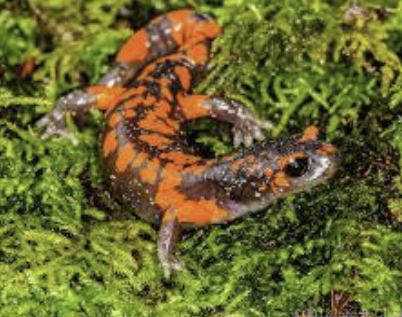
Yellow Blotched Salamander
southern end of Sierra Nevada
spots range from .25 to .5 cm
northern species have smaller spots → speckles
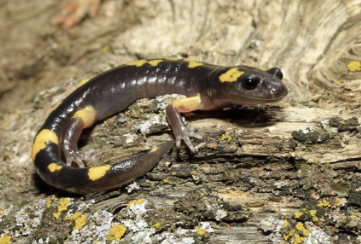
Monterey Salamander
foothill woodland of coast ranges
socal → MCF
solid color species, limited in Sierra foothills
has solid & spotted versions
both versions can be found in same spot at same time
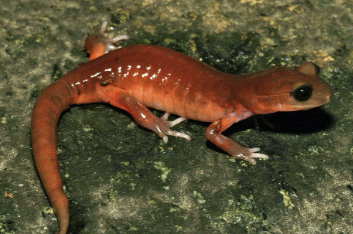
Glibert Skink
juveniles have iridescent blue tail
if attacked tail falls off and wiggles as distraction
will regrow
adults lose blue tail & head becomes orange-red
up to 8 in length (snake-like)
tiny legs, moves slow, stalks insects on floor
mainly nocturnal → beneath logs/rocks
foothill woodland & yosemite valley
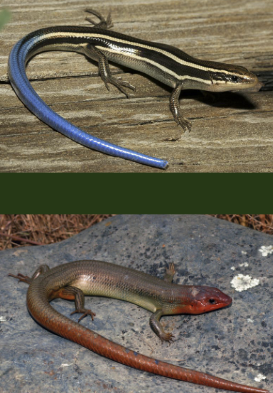
Western Skink
primitive population on Kern Plateau
juveniles have bright blue tail
cause mis ID w/ Glibert’s
believed to not lived in Sierra Nevada until found
found in pine forests & yosemite valley
southern sierran form is significantly smaller than species from coast ranges/socal
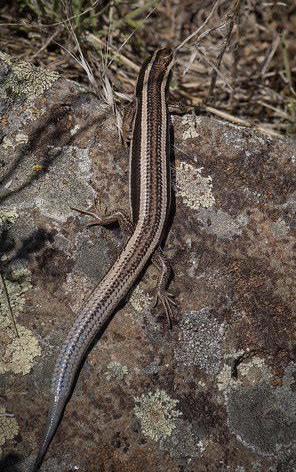
Northern Alligator Lizard
sedentary
live bearers
ambush foragers
occur in forest belt of Sierra Nevada
replaced in SE and in some foothills by Southern Alligator Lizard
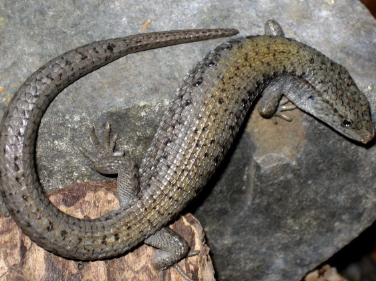
Southern Alligator Lizard
sedentary
live bearers
ambush foragers
on S part of Kern Plateau & canyons on SE of Sierra
lives w/o presence of Northern version
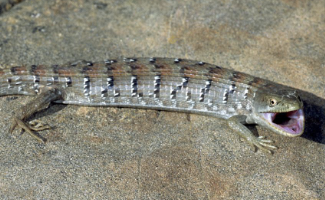
California Mountain Kingsnake
red, black and white bands
biggest threat is humans → mistake for venomous coral snake (not in CA naturally)
name form eating other snakes
often eats lizards, skinks, fence lizards
southern populations are protected w/ restrictions on collecting and selling
venomous snakes are protected in national parks
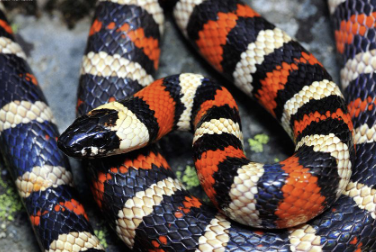
Northern Rubber Boa
yellow belly and green top
head and tail similarly rounded (large worm)
tail often full of scars
don’t travel much
live bearers
when attacked form ball and wiggle tail to confuse for head
very docile
biggest threat are snake collectors
eat insects, salamanders, lizards, & small mammals
live long lives
found in S.N
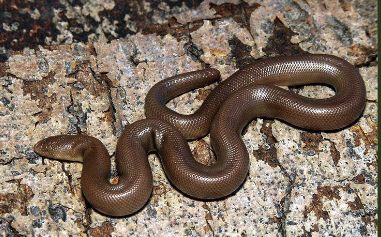
Southern Rubber Boa
San bernadino & San jancito Mts
habitat reduction in socal leading to protections
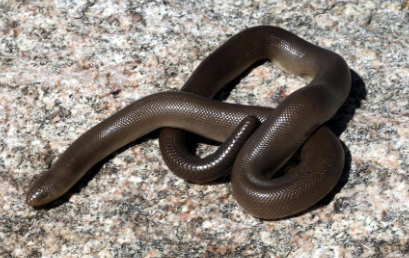
Stellar’s Jay
brightly colored w/ large dark crest
omnivorous - acorns, seeds, insects
remain active in winter living off stored food
only crested jay in west
use raucous alarm calls
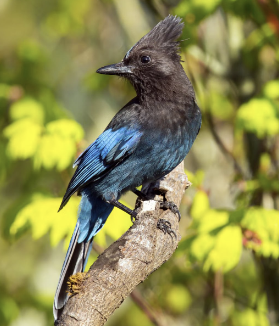
Western Scrub Jay
use alarm calls
omnivorous: acorns & insects
brightly colored no crest
found in foothills
tolerate higher temps
liquid from berries and insects
unfeathered feet
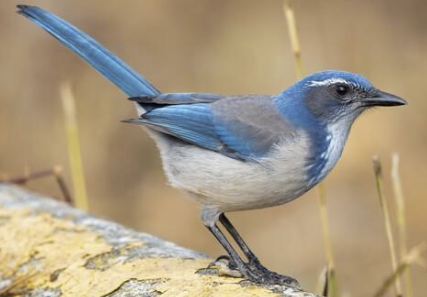
Dark-eyed Junco
most common bird of MCF
small grey bird with dark head
seed-eater
name spanish origin, meaning reed or rush
when threatened does broken wing act → lead away nest
move in downslope below snow line
summer - nests on ground among dwarf bulrushes or grasses
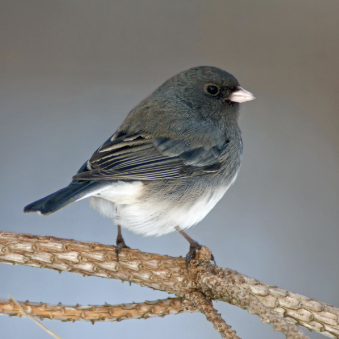
Mountain Chickadee
common bird of MCF
small bird with grey bodies and black and white stripes on heads , chin black while head sides white
Nest in old woodpecker holes
Same niche as the white breasted nuthatch above the foothills
gleaner
people in mountains find them visiting feeders (seeds or nectar)
rarely seen often heard
chick a de de sound
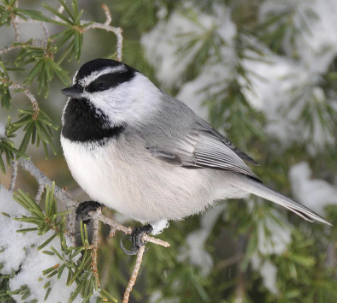
Black-headed Grosbeak
large member of cardinal family
very thick bill
rusty colored body with black head and black & whites wings
eats seeds, buds, fruits, and insects in upper canopy of trees
Migrates to Mexico in winter
Jolly sound of Mixed Coniferous Forest
In spring and summer their melodic song of rising and falling notes is a common sound of the forest
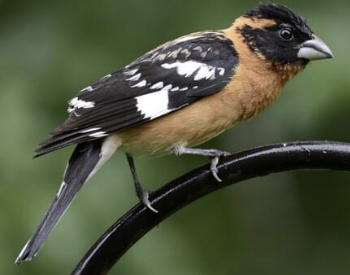
Western Tanager
bright yellow body and red head
gleaner in foliage
song resembles black headed grosbeak
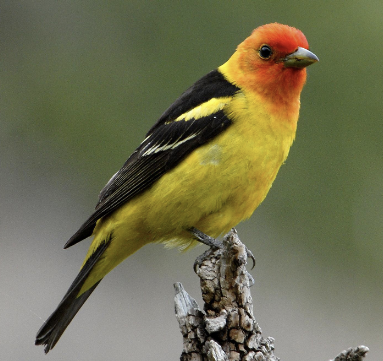
Bullock’s Oriole
bright yellow body, orange head, black chin
drinks nectar from same flowers hummingbirds use
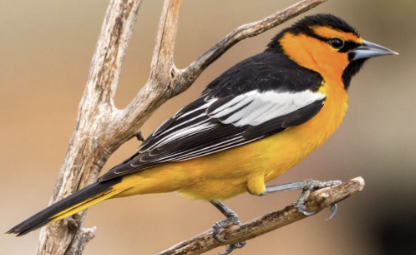
American Robin
brownish back and an orange breast
ground feeder feeding on worms and grubs it located by sound
song resembles black headed grosbeak
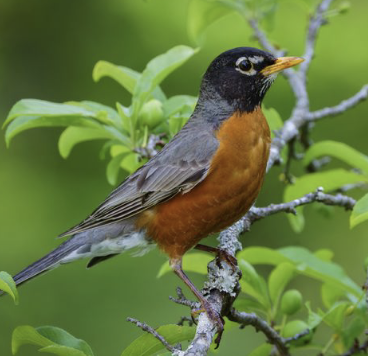
White-headed Woodpecker
commonly seen woodpecker in MCF
works bark of lower portions of trees searching insects
